At the annual EGRIE seminar, held in early August 2025, two awards celebrating outstanding scientific contributions were presented to Marcel Freyschmidt (ZHAW Zurich University of Applied Sciences) and Richard Peter (University of Iowa)! Organized under the supervision of the SCOR-TSE Risk Markets and Value Creation Chair and Dauphine University, and supported by SCOR and the Fondation du Risque, these awards highlight cutting-edge research in risk and insurance economics. To mark the occasion, we invited each laureate to briefly present their work.
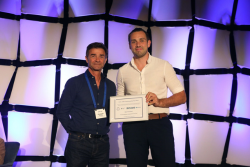
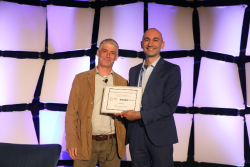
2025 SCOR–EGRIE Young Economist Best Paper Award
The SCOR–EGRIE Young Economist Best Paper Award honors the best paper presented by a young economist at the EGRIE annual seminar. This year’s award went to Marcel Freyschmidt (ZHAW Zurich University of Applied Sciences) for his paper “Tail Overweighting in Catastrophe Bond Pricing,” which offers new insights into how markets evaluate extreme risks.
Could you briefly introduce your research interests?
Marcel Freyschmidt: Broadly speaking, my research focuses on extreme risks and how to design effective risk-sharing mechanisms for heavy-tailed events. I began my Ph.D. at the onset of the COVID-19 pandemic, which was a defining experience for societies and economies worldwide. We observed how unprepared both governments and businesses were and how costly ex-post stimulus packages became. But the pandemic is just one example – if we look at natural catastrophes or cyber risks, the protection gaps for tail events remain substantial.
While natural catastrophes are relatively well understood and modeled, I find cyber risk particularly fascinating. It will become an increasingly important topic in our digitized world, with new risks emerging from technological developments like AI. Understanding how risk-sharing for these extreme, low-probability but high-impact events should be structured is essential for economic resilience. This is not only a question for the insurance industry but also a critical issue for society, governments, and businesses, alongside prevention and resilience measures.
What inspired you to work on the topic of catastrophe bond pricing?
Marcel Freyschmidt: I believe catastrophe bonds will play a central role in future risk management for extreme events. Their size, combined with the capacity of capital markets and their low correlation with overall market risk, makes them ideal instruments to provide additional capital for risk coverage and take on layers of risk that (re)insurers are unwilling or unable to retain. In this sense, catastrophe bonds define the upper boundary of insurability and provide insights into the private market limits.
However, despite their potential, we still know relatively little about how catastrophe bonds are priced. Traditional pricing models fail to capture their structure and risk profile. For me, understanding and modeling this pricing mechanism is a key challenge for developing efficient risk transfer solutions for tail risks, and I hope my research contributes to this understanding.
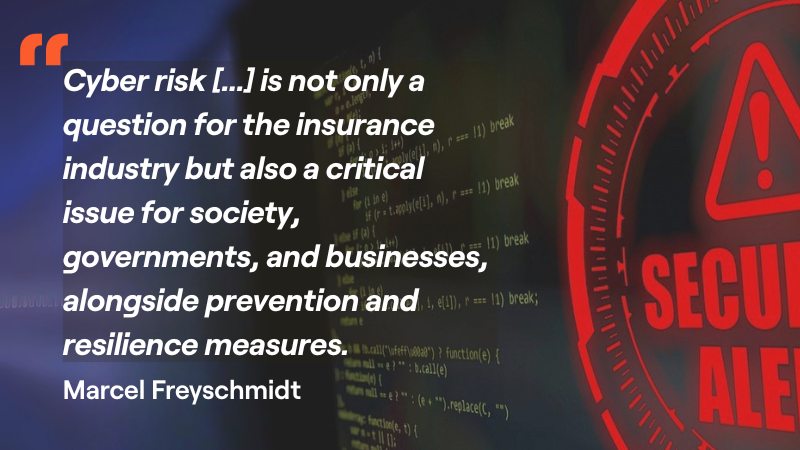 What do you see as the key contribution of your paper?
What do you see as the key contribution of your paper?
Marcel Freyschmidt: My paper provides a new perspective on the pricing of heavy-tailed risks. Since catastrophe bonds are almost entirely driven by tail risks, they are a unique instrument to study how markets price these extreme events. The main finding is that the probability of extreme events is systematically overweighted in pricing – and the rarer the event, the stronger this overweighting becomes.
This suggests that investors demand higher returns for more “extreme” risks, likely due to several factors. Specifically, I identify three key influences. First, tail risk aversion –investors exhibit strong aversion to low-frequency, high-severity events. Second, compensation for model uncertainty, since these events are often based on simulated rather than historical data. Third, implied correlation, as these risks may not be as uncorrelated with financial markets as commonly assumed. Notably, the second and third factors are closely linked, as they relate to events that have not been observed historically but cannot be ruled out theoretically. An interesting additional insight is that cyber bonds risks exhibit stronger overweighting than well-known risks such as Florida named-storm bonds. This highlights that investors seek higher premiums for risks that are less understood and involve greater uncertainty.
The analysis reveals that the catastrophe bond market is highly heterogeneous, making pricing comparisons across bonds difficult. Nevertheless, my study identifies structural patterns that help explain pricing behavior and adds a key piece to the puzzle of how markets price extreme risks.
What does winning the SCOR-EGRIE Young Economist Best Paper Prize mean to you?
Marcel Freyschmidt: Winning this prestigious award is a great honor and an important recognition of my research. The timing, just as I submitted my dissertation, makes it even more me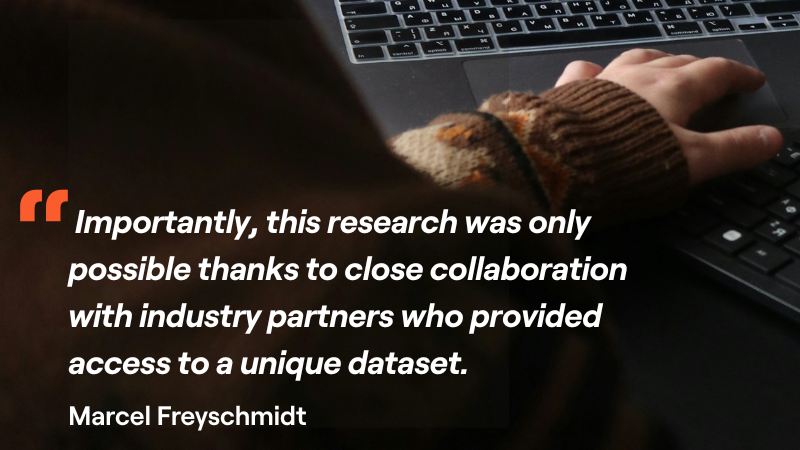 aningful, as it reflects the outcome of several years of work. It also sends a strong signal that research on extreme risks and their economic implications is both relevant and necessary.
aningful, as it reflects the outcome of several years of work. It also sends a strong signal that research on extreme risks and their economic implications is both relevant and necessary.
Given the rise of new risks like cyber in recent years, this award underscores the importance of continuing research in this area. I am excited to further develop this work at the Zurich University of Applied Sciences. Importantly, this research was only possible thanks to close collaboration with industry partners who provided access to a unique dataset.
Looking ahead, addressing future challenges will require a collective effort from academia, industry, governments, and society. Only through proactive collaboration can we build resilience against the next major risk event.
2025 SCOR–Geneva Risk and Insurance Review Best Paper Award
The SCOR–Geneva Risk and Insurance Review Best Paper Award for 2025 was awarded to Richard Peter (University of Iowa) for his article “The Economics of Self-Protection,” published in the Geneva Risk and Insurance Review (March 2024). This annual prize recognizes the most impactful paper published in the journal.
Would you briefly describe your main research interests?
Richard Peter: My research interests are in risk management and insurance. I primarily use models from microeconomic theory to address both descriptive and normative questions. In particular, I aim to understand why people make the decisions they do and what an optimal course of action looks like. I am especially interested in how models of decision-making under risk and uncertainty can inform effective risk management.
What motivated you to write on the economics of self-protection?
Richard Peter:The self-protection problem is a classic topic in the economic analysis of decision-making under risk and uncertainty. Even the simplest model of self-protection is far from trivial a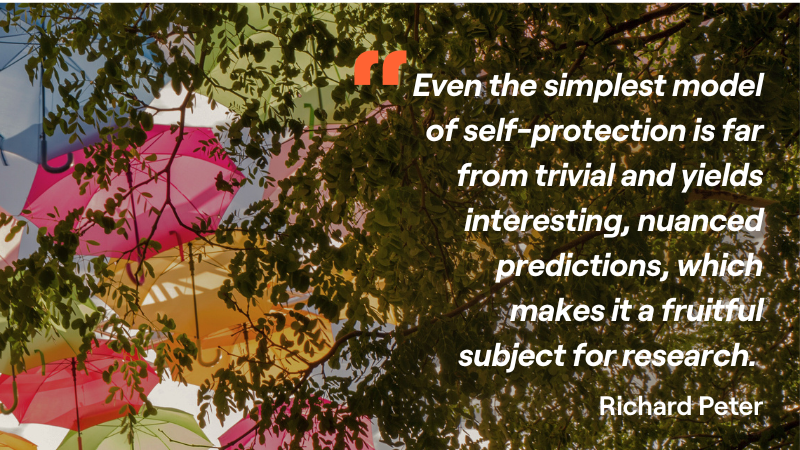 nd yields interesting, nuanced predictions, which makes it a fruitful subject for research. Another motivation is that the development of the self-protection literature is deeply connected with the European Group of Risk and Insurance Economists (EGRIE), which made the topic especially fitting for the 50-year anniversary issue.
nd yields interesting, nuanced predictions, which makes it a fruitful subject for research. Another motivation is that the development of the self-protection literature is deeply connected with the European Group of Risk and Insurance Economists (EGRIE), which made the topic especially fitting for the 50-year anniversary issue.
What are the main insights you would like readers to take from your paper?
Richard Peter: The paper’s main contribution is a conceptual framework I developed to classify and catalog variations of the self-protection problem that researchers have studied since Ehrlich and Becker (1972) introduced the concept. I believe this framework will be useful for generating new ideas and broadening the scope of research on self-protection. Additional insights include a simple example that illustrates why downside risk aversion matters for self-protection and a set of directions for future research on the topic.
What does winning the SCOR-Geneva Risk and Insurance Review Best Paper Award mean to you?
Richard Peter: I am deeply humbled by this recognition. It means a great deal to me. I consider EGRIE one of my main academic “homes,” and I greatly appreciated the opportunity to contribute to the special EGRIE-anniversary issue of the GRIR. I used it as a chance to showcase the group’s important intellectual contributions over the past five decades, many of which have been prominently published in the GRIR. I am really happy that this perspective resonated with the readers.
What advice would you give to young researchers in risk and insurance economics?
Richard Peter: Find topics you are passionate about, attend conferences, and connect with people who share your interests. Put yourself out there and be an active member of the research community. Discover your academic home in terms of both research topic and community, and care for it as you would for a real home, through continuous improvements and good stewardship.
Useful links :
- SCOR-TSE partnership: “Risk Markets and Value Creation” Chair
- EGRIE annual seminars
- Previous award winners
- Tail Overweighting in Catastrophe Bond Pricing paper
- The Economics of Self-Protection paper
Interview published in TSE Reflect, September 2025
Photo © unsplash, AdobeStock
